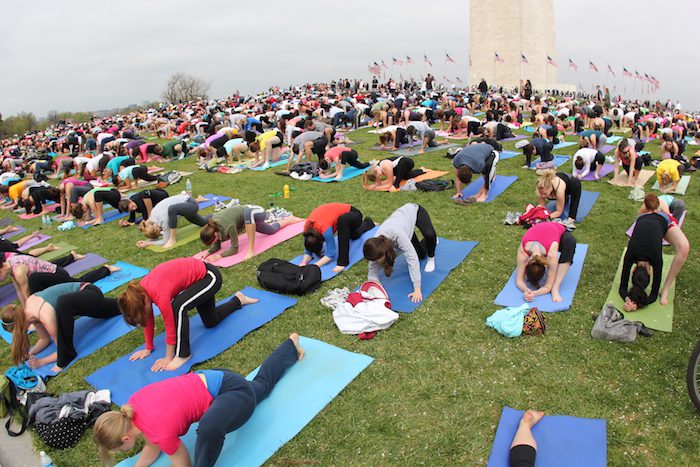
Working out and getting healthy can be hard for a lot of people. Brothers Anthony and Joe Vennare know this. The Pittsburgh natives had previously owned a gym before deciding to get into the content business when they saw a void in locally focused health and fitness coverage.
“A lot of times people are put off by diet hacks and workout plans in Men’s Health and Women’s Health,” said Joe, Fitt’s COO. “What we said, and continue to believe, is that nobody wants to be unhealthy, and if they can get healthy in whatever definition that means for them and have fun doing it, that’s kind of the ultimate.”
That’s the thinking behind Fitt, their bootstrapped network of local fitness sites, which now operates in 16 different U.S. cities with another seven slated to launch soon.
The sites feature stories such as “Summer Long Schedule of Outdoor Yoga Classes in Boston,” “The Best Spots For Vegan and Vegetarian Eats in Austin,” and “7 Locally-Brewed Kombuchas to Try in Boulder.”
“Our content is evergreen,” Anthony, the company’s CEO, said. “We don’t have to come up with weekly or daily news, so we don’t have to have that high of a content cost. We’re just trying to show scale first and then fill in the gaps.”
Fitt has a staff of six based in Pittsburgh; all of the local coverage is written by freelancers in their respective cities. Fitt averages between 500,000 and 750,000 unique monthly visitors across the entire network.
Because of the nature of its coverage, Google searches are a big driver of Fitt’s traffic.
“We haven’t been around that long, in terms of domain age,” Anthony said. “There’s a lot of factors that we’re trying to improve to get us to show up in some cities…Running routes, biking trails, yoga studios, farmer’s markets, good brunches — these terms, which no one had ever addressed, are what we’re really trying to speak to. That adds up over time — if it’s 20,000 people a city and we’re in 20 cities, that’s a lot of people are not just reading our site, but we can see they’re spending time.”
The brothers initially launched the first site in Pittsburgh as Fittsburgh in December 2015 before changing the name to Fitt and expanding to five total cities in March 2016. The company decided to target its growth to cities with large millennial populations.
Fitt has built its business around presenting sponsorships, where a company will have its logo on the site’s homepage and on story pages. It has some native content and banner ads also.
The company is on pace to generate more than $1 million in revenue this year and is profitable, Joe said. “The partnerships we’re doing from a healthcare perspective are yearlong or multiyear six-figure agreements to build out the platform, with native content, social promotion, email promotion, supporting initiatives that they have locally,” he said. “And then the smaller, consumer or event-based partnerships are five-figure minimum buy in for X number of platforms, articles, or engagements, etc.”
It would like to expand to 25 or 30 sites within the next year, Joe said. Fitt would like to add sites focused on college campuses as well as expand internationally.
Fitt has already gotten involved with events, and would like to continue to find additional ways to attract users and generate revenue.
“In addition to growing the number of locations, we want to grow and increase the number and types of interactions that people are having with us,” he said. We’ve been able to, in some instances, do lead generation or tracking codes for people signing up for events and classes. We want to continue to explore that model as another form of revenue. We’re curating events and class lists. We’re seeing people read and share and click through and basically leave the site to complete that interaction or sign up or registration. Bringing some of those things within the platform is very interesting to us.”
The company has targeted health systems as sponsors, which it feels fit with its coverage of health and fitness. It’s also tried to use its network as an advantage. For example, its worked with statewide health companies UPMC Health Plan in Pennsylvania to sponsor its Philadelphia and Pittsburgh sites as well as Kaiser Permanente in Colorado for Denver and Boulder.
“With integrated health systems, we found that they’re spending millions of dollars in each local community trying to reach people or trying to make people healthy — trying with health population management, or however they want to describe it — but the impact is very small. We thought we could be a Robin Hood in this whole concept, where we can take their money and do good with it. Instead of putting up a billboard, we could run free yoga classes, and it would be more beneficial for us and them. A lot of these companies don’t have the best brand reputation, so if we started providing access to a lot of things and covering a lot of cool stuff we can humanize their brand a little bit.”
As it continues to plot its growth, Fitt says it wants to focus on attracting sponsorships from national brands such as retailers, athletic apparel firms, and food companies that fit with its editorial mission.
With that in mind, Anthony said Fitt is committed to staying away from local advertisers and low-cost programmatic ads.
“We just don’t think that the model of saying, ‘Hey, buy this banner ad’ or ‘Buy this story about you'” [works], Anthony said. “It doesn’t benefit us, because if it’s something that doesn’t fit, we shouldn’t be talking about it, but then you pay us and it could hurt us as a brand. And also, a local gym — having owned a local gym — doesn’t have that much money to spend.”